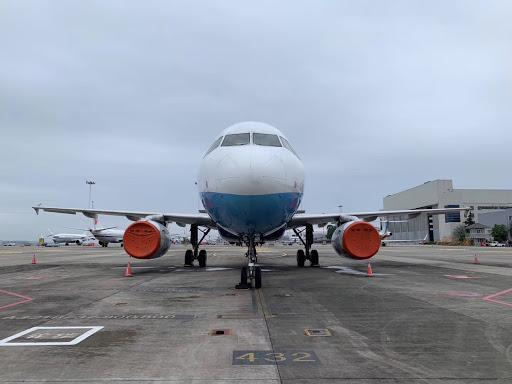中国の航空機整備会社、メンテナンス能力の90%を回復させる

中国のMRO(航空機整備会社、Maintenance, Repair, Overhaul)は新型コロナウィルス(COVID-19)感染拡大の影響を真っ先に受けたアフターマーケット会社だ。しかし、中国国内での需要は当面停滞するにもかかわらず、少なくとも1社のMROはメンテナンス能力の完全回復に近付きつつある。
Hangxin Aviation Services社のメンテナンス工場は2月10日に操業を再開した。「今週の時点で、我が社のメンテナンス能力の90%以上は復旧した」と2月26日に語ったのは、同社ゼネラルマネージャーのZhou Zhenjun氏だ。
一方で「誰もが知るとおり、ほとんどの航空会社は大規模な減便を行っている」とも述べ、顧客のひとつである航空会社には影響が出ていることにも触れた。
施設が所在する地域の地方政府はコロナウィルス対策として企業に一定の要件を定めており、同社はこれを満たす形で対応を進めている。
同社幹部によれば、湖北省にいる少数の従業員は今も検疫下に置かれているため、業務に復帰することができずにいる。
同社では現在の状況や業務量への対応と、従業員への影響の最小化を目的に、一連の従業員トレーニングおよび業務評価プログラムを実施している。
同社の拠点は広い地域に分散していることが救いだ。中国国内では広東省の広州・珠海、上海・香港・天津、黒竜江省のハルビン、さらにエストニアにはMagnetic MRO社が所在している。
部品供給および物流面については、広東省と上海の輸出入業務はほぼ平常通りに戻っており、この観点からは目立った影響はなかったとZhou氏は語る。
中国国内の航空需要が減少していることから、必然的に臨時メンテナンス関連業務は少なくなると同社幹部は見ている。「とはいえ、当社の収益の半分以上を占める海外事業は依然として成長を続けており、長期メンテナンス契約の状況も普段通りだ」とも述べた。
中国のMROがこれほど早く業務を再開できたことは幸運だ。中国国内の工場は2月9日に操業再開する見込みだったが、2月16日にKuehne + Nagel社のロジスティクス担当者が語ったところでは、中国国内の企業・工場は徐々に操業再開しているものの、その度合いには地域差が見られる。
湖北省は2月末時点で封鎖が続いている。他地域からの立入は今も制限されており、湖北省からの旅行者が戻る場合でも14日間の検疫が必要なことから、操業再開を認められた企業においても、その操業度は10~50%程度であることが多い。
Kuehne + Nagel社によれば、中国の主要港湾は稼働しているものの、上海・天津・寧波を中心に施設内は大混雑、リーファープラグの不足、作業員不足による積み下ろし作業の停滞、といった状況に見舞われており、大幅な遅延が生じている。
武漢を除き、中国本土と香港の空港は稼働している。武漢空港は支援目的のフライトのみを受け入れている。
以上は、Henry CanadayがAviation Daily誌いた記事です。 Aviation Dailyは、民間航空に焦点を当てた経営幹部に重要な洞察をお伝えいたします。航空会社と空港の戦略、主要航空会社のデータスナップショット、運賃データ、および国際的なカバレッジを毎日お届けいたします。Aviation Week NetworkのAviation Dailyをもっと知りたい場合、こちらをクリックして下さい。
The 2019 novel coronavirus, or Covid-19, started in China, and Chinese MROs were the first aftermarket entities to be hit by its consequences. But at least one of these MROs says it is well underway to full recovery of maintenance capacity, even if local demand will flag for a while.
Hangxin Aviation Services’ MRO facilities resumed work on Feb. 10. “As of this week, Hangxin's maintenance capacity has recovered by more than 90%,” said General Manager Zhou Zhenjun on Feb. 26.
However, Zhou noted that there are signs of a decline in business of Hangxin’s airline customers. “As we all know, most airlines have significantly reduced their flights.”
Hangxin’s local government has a series of requirements for dealing with the coronavirus. The MRO has installed measures that meet these requirements.
The Hangxin exec said a small number of his employees in Hubei Province, in which the virus first spread from Wuhan City, are still under observation, and these employees cannot return to the company temporarily.
In order to adapt to the current situation and workload, the company has implemented a series of employee training and performance assessment programs to minimize the impact on employees.
Fortunately Hangxin is well diversified geographically, with facilities in Guangzhou and Zhuhai, both in Guangdong Province, Shanghai, Hong Kong, Tianjin, Ha’erbin in Heilongjiang Province, and at Magnetic MRO in Estonia.
On access to parts and logistics, Zhou said the import and export business in Guangdong Province and the city of Shanghai has basically returned to normal. “We did not see any impact on us in this respect.”
Due to the reduction in Chinese air travel, Hangxin managers expect their ad-hoc MRO business will inevitably decrease. “But the overseas business, which accounts for more than half of our revenue, still keeps a good growth momentum,” Zhou said. “And some long-term service agreements will also keep normal levels.”
The Chinese MRO has been lucky to recover operations so quickly. Chinese factories were supposed to resume operations on Feb. 9, but on Feb. 16, logisticians at Kuehne + Nagel said Chinese companies and factories were gradually resuming work, but the pace varied among provinces.
Hubei province was still locked down at the end of February. And even companies that had been approved for reopening were mostly operating at 10-50% of capacity, due to a 14-day quarantine for travelers returning from other provinces and workers still unable to return from other provinces.
K+N reported all key Chinese ports were operating, but less efficiently due to limited workforces. “The ports of Shanghai, Tianjin and Ningbo remain congested due to yard density at critical levels and ongoing shortage of reefer plugs at the terminals of these ports. Loading and discharging operations slowed down due to lack of stevedores. Wuhan port remains closed until further notice.”
All airports on the China mainland and in Hong Kong are operational except for Wuhan, which is closed to passenger flights and receives only relief missions.